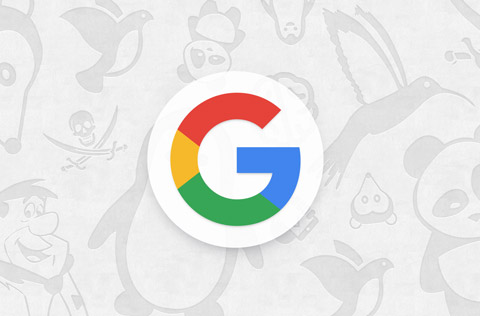Google algorithms are complex mathematical systems with strict instructions for crawlers and bots on how to pick the most accurate and relevant Search Engine Result Pages (SERPs).
Google’s ranking algorithms are constantly updated, and this change can go up to 500-600 times a year. Most of these changes are minor tweaks or experiments, and SERPs are usually not impacted by these changes.
What SEO world pays attention to are major algorithm updates. These changes can cause major drift in search ranking. They aim not to disrupt the optimizing efforts of SEO professionals but to enhance user’s experience on Google. They often come unannounced, and act as a difficult surprise for all SEO expert in Singapore.
In this post, let’s elaborate more on the major Google algorithm updates since 2011.
“Medic” Core Update – August 1, 2018
The Medic Core update was released over a week’s period made it’s impact on SERPs on August 1 & 2 in 2018. It mainly affected health & wellness verticals and YMYL (Your Money Your Life) Sites, but some others also bore the impact. These sites provide decision-making advice on health, legal and financial concerns, require users’ personal information and contain a page to perform monetary transactions.
Google called it a “broad core algorithm update” and subtly mentioned that websites affected should focus on creating better content.
Mobile Speed Update – July 9, 2018
After 6 months of preparation, Google rolled out the mobile speed update on July 9, 2018. According to Google, this update only impacted the slowest sites online. Otherwise, search performance of most websites stayed the same.
To measure the speed performance for each page, Google suggested web developers to use metrics. These tools include Page Insights, Lighthouse, Chrome User Experience Report and more.
Google also emphasized that high quality content is still the primary ranking factor.
“Brackets” Core Update – March 8, 2018
Brackets focused on content quality and was an improvement on the Fred update released in March 2017.
Nobody knows why the update was called “brackets’, but it was coined by Glenn Gabe. The update continued for 2 weeks and as a result, rankings of many websites saw fluctuation.
The worth noting highlight of this update was “rich snippets”. It eliminated low quality rich snippets on SERPs. Rich snippets yield high click-through rate (CTR) and websites which relied on this factor faced major setback.
Ultimately, highest priority were still given to pages with high quality content.
“Maccabees” Update – December 14, 2017
In December 2017, the Maccabees algorithm was brought out with multiple changes. The update focused on search and keyword relevancy and websites with keyword stuffing suffered. Others which were affected were sites with too many affiliate links, used black hat link building practices, no schema.org integration and, consisted too many pages with similar content.
Many websites which were affected and had their rankings dropped drastically were able to recover quickly by removing the bad practices from their sites.
“Fred” (Unconfirmed) – March 8, 2017
Fred was an unconfirmed algorithm update in March 2017. It caused a tumult in the SEO world and impacted websites of all niches. It came unannounced and created waves of panic.
The update mainly hit content-driven websites loaded with advertisements. These websites prioritized monetization over content and the new update tumbled them down the search rankings. Other sites affected were those with content from wide range of niches, contained too many affiliate links and deceptive advertisements. Their loss was someone else’s gain. Websites with high quality content and reasonable advertisement rose in the SERPs overnight.
“RankBrain” – October 26, 2015
RankBrain stood apart from all the other algorithm updates by Google because it used artificial intelligence to determine the most relevant search results. With the introduction of RankBrain, artificial intelligence became the 3rd most important factor in ranking high on Google.
When a user entered a query into the search field, RankBrain algorithm would apply factors that personalized the search for each individual. These factors include location, and the purpose of query. This helped Google in selecting the most relevant results for each user.
RankBrain’s artificial intelligence meant that it has the capacity to improve on it’s own. It identifies each time a user is not satisfied with the search results and improves it’s algorithm to suit user’s needs.
“Mobilegeddon” Mobile Update – April 22, 2015
Mobilegeddon was a mobile-friendly algorithm update realeased in April 2015. The update came with an announcement that the SERPs for mobile and desktop searches would not differ.
It was one of the most important algorithm changes and was called for by the increase number of users using mobile phones to surf the web. Upon the approach, Google shifted to “mobile-first”. Prior to this update, users who surfed on their phone were forced to ‘zoom in’ on desktop versions of websites. These websites were not yet modified to be mobile-friendly.
The introduction of Mobilegeddon prompted websites to be more mobile-friendly and increase their website loading speed. In fact, it was so effective that just a few months after the update, there were hardly anymore websites that did not have both mobile and desktop versions.
“Pirate” 2.0 – October 21, 2014
Pirate was re-updated in October 2014 and targeted a limited number of sites.
It was originally launched in 2012 with the aim to penalize websites that infringed copyrights. Websites that supplied pirated products were tackled with copyright removal notices, and sites which violated DMCA guidelines or had a high volume of copyright infringement reports were penalized. The update also enhanced it’s selections on search results and general user experience.
The re-updated Pirate 2.0 demoted torrent websites that distributed materials without the owner’s consent. Followed by the update, the search rankings of such sites dropped dramatically.
“Pigeon” – July 24, 2014
Introduced in July 2014, the Pigeon algorithm took the SEO world by a storm. It was not a penalty-based update, but significantly impacted local searches. It’s enhancement led to a sudden rise of local businesses appearing in the top search results.
Pigeon enhanced user experience by giving preference to the user’s location. Local results were prioritized and users could see a service-listing specific to their location. It also boosted the ranking of local directory listing sites such as Yelp, TripAdvisor, YellowPages and more.
This update was in fact releaced after Yelp complained that Google preferred it’s own search engine rather than Yelp or other directories in SERPs. Followed by the update, Yelp ranking dramatically improved.
“Hummingbird” – August 20, 2013
As it name indicated, the update strove to perform each Google search ‘precise and fast’. It was released in 2013 and aimed to make Google Search more user-friendly. Prior to this update, search results were based on individual keywords rather than the entire query. Hummingbird enhanced the search by understanding the query as a whole and displayed results with higher accuracy.
Upon the update, SERPs displayed better results for conversational queries and those of co-occurring terms and synonyms. The update laid emphasis on page authority, website relevance and understood the relationship between each related keywords.
Website owners were encouraged to supply natural, easy to read context without any forceful insert of keywords. Though it was not a penalty-based update, it did affect SERPs ranking of some websites.
“Payday Loan” Update – June 11, 2013
The Payday Loan algorithm was released to target spammy results of pornography, gambling, drugs, pharmaceutical and payday loans websites. This update did not affect most ranking, but only those of a specific industry that implemented spam techniques to gain search rankings.
The update penalized websites that used illegal SEO tactics which involved hacking other websites or infecting them with malware for their own personal advantages.
“Penguin” – April 24, 2012
The introduction of Penguin targeted sites that were over-optimized for SEO, specially by using bad practices such as keyword-stuffing and black hat tactics to get backlinks. Otherwise, websites that followed white hat SEO strategies, only gained from the update.
Some other factors worth noting from the algorithm were link relevancy, outbound link quality, over-optimization of anchor texts, bad affiliate links, hidden links, link pyramid and other mainly black hat SEO tactics websites implemented to boost SEO ranking.
The update impacted 3% of the SERPs. Subsequent penguin updates were released in 2012, 2014 and 2016 but did not show a significant impact on the SERPs as compared to the original.
“Panda”/”Farmer” – February 23, 2011
The Panda (or Farmer) update was introduced in February 2011 with the intention to remove spammy content websites or sites with low quality or ‘thin content’ from the SERPs. It was the first algorithm update that focused on enhancing quality content. It specifically targeted “content farms” that were designed to catch attention of search engines. It impacted the SERPs to a great extent and it’s effects can still be seen today.
The update eliminated old school SEO tactics of posting articles on reference-based sites such as EzineArticles and Mahalo. It tumbled many top ranking websites down the SERPs and was the first algorithm update to penalize websites sacrificing content quality with sole aim in earning high traffic via Google search. Over 3.1% websites on the internet were impacted by this change.
This algorithm used site’s inbound links, reference queries and search queries to create a modification factor, which was then used to rank the page. In 2016, the refined Panda algorithm became an important part of Google’s core search system.
Conclusion
Many people who are working in the SEO industry complain that Google is keeping them on their toes. Yet, what Google aim has always been to enhance user experience. Thus, make user experience your main priority when you work on your website and you will not be easily beaten down by any new algorithm updates from Google.
At Digital Marketing Singapore, we can help you fix any issues you have. Contact us now.








